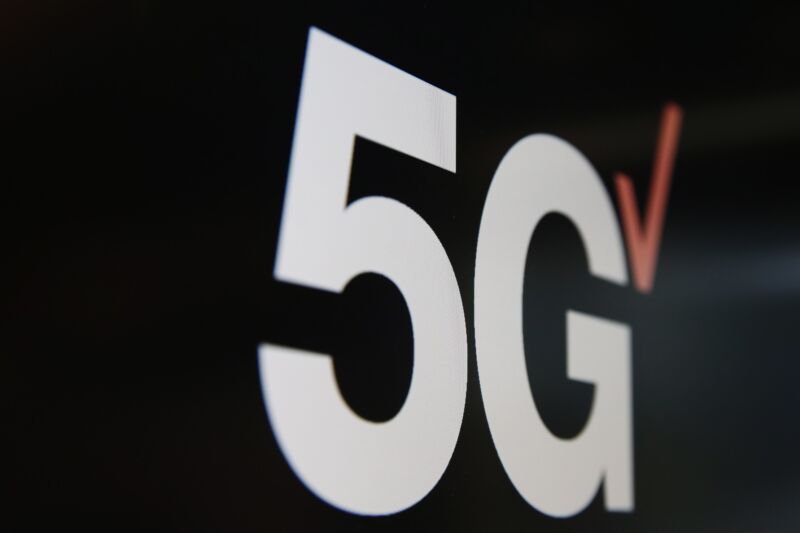
Verizon this week slimmed down the number of its 5G pricing options. But the operator continues to position its speedy midband 5G network as a premium offering that customers need to pay extra for.
That, according to one financial analyst firm, may not fly in an industry where Verizon’s competitors aren’t charging extra for fast 5G.
“Trying to convince customers they have to pay extra for 5G UWB [ultra wideband] service is likely a losing battle as consumers are likely aware other providers will provide midband 5G for free,” wrote the financial analysts at KeyBanc Capital Markets in a note to investors of Verizon’s new pricing plans.
But the executive driving Verizon’s new 5G strategy argued that the operator is making the right decision by putting 5G at the heart of its new pricing gambit.
“It’s the network,” said Verizon’s new Consumer Group CEO, Sowmyanarayan Sampath, during a recent investor event, according to a Seeking Alpha transcript. He said Verizon’s “ultra wideband” 5G network is the operator’s “advanced network with all the bells and whistles.”
He added: “We have the best network on Earth.”
That, of course, is up for debate. Although Verizon continues to cite research showing the superiority of its 5G network, its rivals also make the same argument based on other competing research.
Broadly, Verizon, T-Mobile and AT&T are all in the midst of upgrading their 5G networks with midband spectrum in an effort to offer faster connections. But T-Mobile has enjoyed a headstart on the effort, and partly as a result is gaining customers amid an improvement in customers’ perception of its network.
Going from six to two
In its new announcement this week, Verizon said it would replace its previous pricing plans (dubbed “Mix & Match” and stretching across six options) with a new offering called “myPlan” that offers just two choices: Unlimited Welcome for $65 per month for one line of service, and Unlimited Plus for $80 per month for a single line of service.
The main difference between the two choices is that Unlimited Welcome doesn’t give customers access to Verizon’s “ultra wideband” 5G network and Unlimited Plus does. Unlimited Plus also offers 30GB of hotspot data and won’t cap or slow customers’ speeds. Unlimited Welcome presumably will include caps and throttles, though Verizon officials didn’t provide details. Update: After the plans launched, Stetson Doggett noted on Twitter that Unlimited Welcome will connect to Verizon’s “ultra wideband” network but will throttle speeds to 25 Mbit/s.
(Source: Verizon)
Verizon’s “ultra wideband” 5G network runs over its midband and highband, millimeter wave (mmWave) spectrum holdings, while its standard 5G network only works on its slower, lowband network. (The operator is poised to add more midband spectrum into its network later this year thanks to ongoing C-band clearing efforts.)
Verizon doesn’t specify exactly how fast its various 5G options are, but noted that its “ultra wideband” 5G network is 10x faster than its 4G network.
After customers choose which flavor of Verizon 5G they want, then they can add “perks” to their plan ranging from international data to additional hotspot data to the Disney+ streaming service. Each “perk” costs $10 per month. Verizon’s Sampath said Verizon earns an average of 30% gross margin on the sale of such perks.
The wider context
Verizon’s new pricing plans come at an important time for the company.
First, the company is struggling to reverse almost a year of customer losses. Those losses stand in stark contrast to the millions of new customers that T-Mobile, AT&T, Charter Communications and Comcast have gained during the same period.
In part to address the situation, Verizon CEO Hans Vestberg recently put Sampath in charge of Verizon’s consumer business after a short stint leading the company’s business division, among other executive shuffling. And the changes appear to continue to ripple through the company; Verizon’s longtime marketing chief, Diego Scotti, recently left the company, according to a Wall Street Journal report.
Sampath, for his part, appears to be making a big bet on Verizon’s new plans. He argued they would help rekindle growth among Verizon’s customer base.
Moreover, like other executives in the space, he predicted that overall growth in the wireless industry will slow in the coming months. He said he expects the industry to eventually grow by 5-6 million customers each year, rather than the 10 million-customer-per-year pace it’s been growing in recent years.
That slowdown might be a good thing for Verizon, he said. “It’s actually better for an incumbent like us to continue driving more pricing power in the market,” Sampath argued.
Some remain skeptical.
“Verizon’s new rate plans will raise prices for many consumers who opt to purchase add-on services,” wrote the KeyBanc analysts. “Both of these are likely headwinds for gross additions. Verizon’s basic pricing is still 2x+ the comparable offering of the Cable providers. Further, Verizon has been trying to convince investors of their ability to migrate consumers to higher tier rate plans, and while this could be ARPA [average revenue per account] accretive if multiple ‘perks’ are purchased, we don’t believe consumers receive incremental value or allow Verizon to capture incremental value.”
Click here to read the full article from Light Reading.


